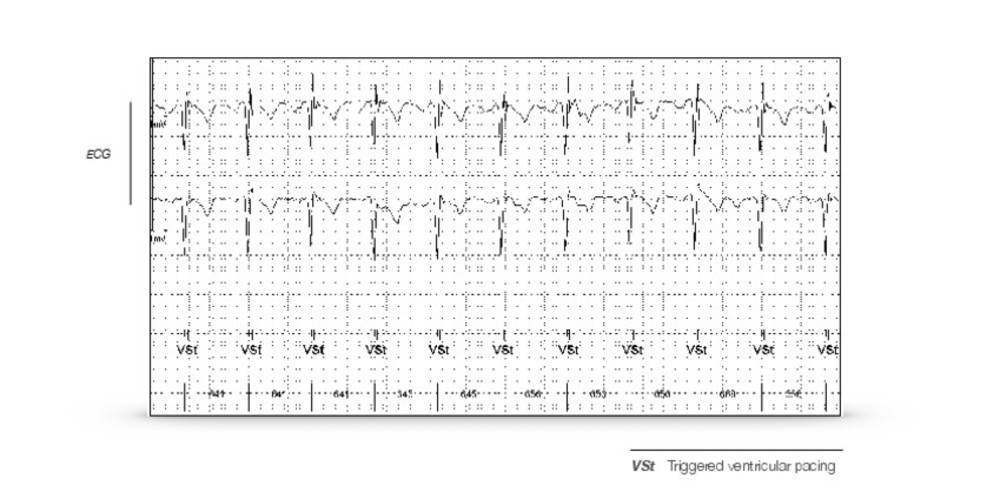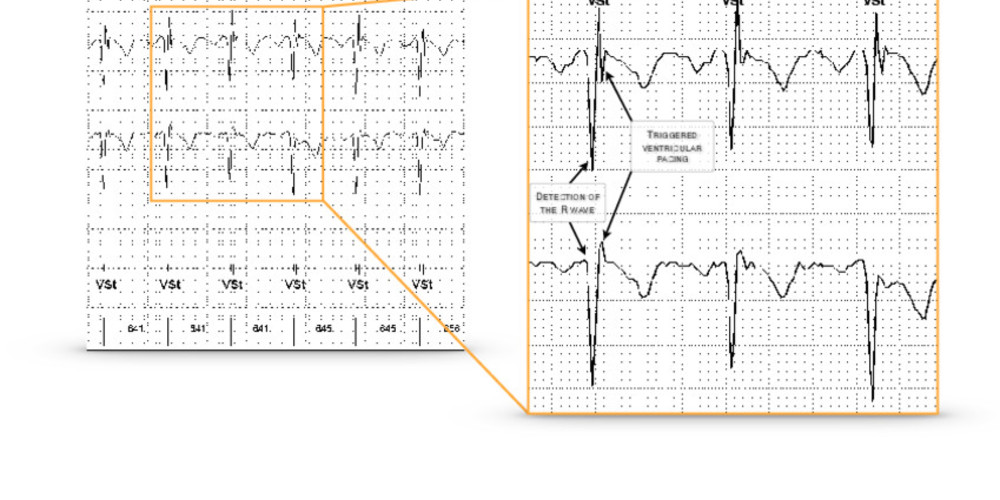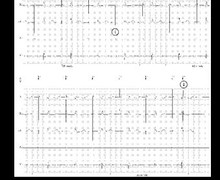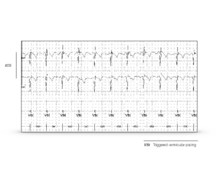triggered AAT, VVT, DDT modes
Tracing
Manufacturer Abbott
Device PM
Field Pacing Modes
N° 3
Patient
Same patient as in tracing 1; change of pacing mode (the leads function normally).

Graph and trace
Programming in VVT mode 60 beats/minute; each ventricular sensing (VS) triggers a ventricular pacing (t for trigger); the pattern of the intrinsic QRS does not appear to be modified by the ventricular pacing which occurs during the myocardial refractory period.

Other articles that may be of interest to you
EGM recordings






When the VVT mode is programmed, the sensing of a ventricular complex triggers an immediate pacing in the absolute refractory period of the ventricular myocardium (trigger). If no ventricular activity is sensed, pacing occurs at the programmed minimum rate. This operation therefore corresponds to the opposite of the VVI mode where sensing inhibits pacing. This type of pacing mode is currently very seldom programmed in the long term since associated with an unnecessary increase in energy consumption. The triggered modes can be used in 2 particular circumstances:
1) in the event of sensing of myopotentials or of electromagnetic interference, a pacemaker programmed in SST mode does not inhibit but induces pacing on each artifact sensed outside the refractory period, which allows avoiding a pause in pacemaker-dependent patients. This type of pacing mode was of particular interest in older pacemaker models which were more susceptible to external interferences since they only functioned in unipolar mode.
2) this mode allows assessing the quality of sensing in the considered chamber as well as verifying the absence of far-field oversensing and that extrasystoles are also properly sensed.